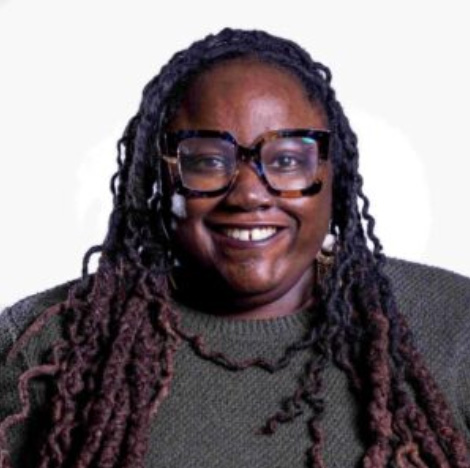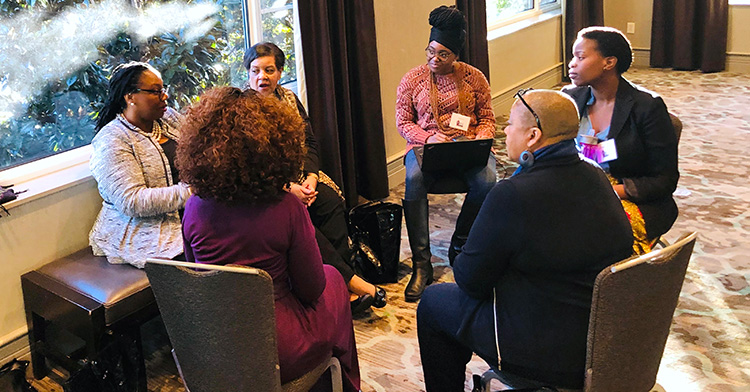A couple of years ago, I happened upon an old seminary friend at a preachers conference. After a few minutes of catching up, he smirked and pulled out his phone. “You’ll love this,” he said. He showed me four pictures from his recent trip to Istanbul, what was once the holy city of Constantinople.
I saw four dark little holes in a stone wall. “What are they?” I asked.
“Chrysostom … and the Cappadocians,” he said. I nearly fainted.
What he meant, and what had me light-headed, was that inside those holes were the bones of four special men: John Chrysostom, Gregory of Nyssa, Basil the Great and Gregory Nazianzus.
Unless you’ve been to seminary or were raised in an extremely devout Eastern Orthodox church, you probably wouldn’t know who they are. In the fourth century, Gregory of Nyssa, Basil and Gregory Nazianzus were the pre-eminent theologians of their day. And John Chrysostom … well, he’s my favorite. He was the bishop of Constantinople and considered by many to be the greatest preacher of all time. Even his name, Chrysostom, is actually a moniker given to him by the unwashed rabble who would file into his cathedral on Sunday mornings. It means “Golden Mouth.”
If you think it’s silly to be so excited to see, not the bones of those holy men, but pictures of the holes that contain the bones, it absolutely is. But it isn’t without precedent.
The Orthodox tradition that those four men built teaches that bones are holy. If a person has lived a good and holy life, if he has fasted and prayed and cared for the poor, then he is blessed by God, inside and out. His spirit and body are infused with divine grace. Such a devout person becomes a living, moving, material conduit of God’s love here on earth.
It seems almost heretical to Protestants and evangelicals that something physical could be holy in and of itself. Yet think about the way we handle the remains of our loved ones, reverently spreading their ashes or praying as they are lowered into their graves. We tell ourselves that the body is just an empty shell, but we don’t act as though we really believe that. We visit our loved ones’ graves, or avoid visiting them, all because deep inside we seem to have a sense that something continues to reside there. To visit a gravesite or a memorial is to have a reverent encounter.
And we save our little trinkets, don’t we? I have a coin my grandfather gave me just before he died. I have a quilt my mother made me before I went off to seminary. I treasure these objects because I know my loved ones infused them with their love, their very being. Now that my grandpa is gone, I often look at the coin and remember the man he was. My encounter with the coin is an encounter with the love that he had for me. In the same way, an encounter with the bones of a blessed person, a saint even, is an encounter with the God who loved him and gave him as a gift to the world.
If that isn’t true, then why save the trinkets? Why bury the bodies? Human beings understand intuitively that bodies and objects infused with love are holy.
In this age of mass murder, the question I have is, Couldn’t the opposite also be true? If bodies and objects can be infused with goodness and grace, couldn’t they also be infused with evil? Couldn’t it be that the positive “charge” of love carried by bodies of deceased saints and quilts stitched with tired hands also has an opposite? If bodies and objects can carry the positive charge of love, couldn’t they also carry the opposite charge of evil?
An object designed to tear flesh and take life, manufactured for profit, advertised by preying upon our most basic fears and insecurities, and fetishized as an instrument of violence, must carry a charge of evil. An anti-grace, a negation of blessing.
I cherish my mother’s blanket. But imagine for a moment another blanket. You see that it’s old, but it feels soft and warm, and it smells fresh and clean. There’s only one catch: it was one of the blankets laced with smallpox given to the Native Americans by their white conquerors at Fort Pitt in 1763 in a crude attempt at germ warfare. It’s perfectly safe now; it has been thoroughly cleaned and irradiated to remove any taint of infection. But would you sleep with it? Would you keep it in your closet? Would you wrap your children in it? Of course not, but not because it’s dangerous. You would reject it because it has been infused with more than smallpox; it has been infused with hatred.
I can imagine guns that are rather like my mother’s blanket: rifles and shotguns passed down from parents to children, keeping alive the traditions of hunting and sport shooting. I can imagine their being bought with hard-earned money. I can see parents lovingly teaching their sons and daughters about safety, teaching them how to shoot, teaching them how to feed their families and protect their flocks. Such guns would be holy relics, infused with the grace of generations who have kept alive traditions of living close to the land.
But the guns that kill our children, the guns that invade our schools, the guns that cut down youth in the streets, are infused with something much darker. They were first designed for soldiers and peace officers, those with explicit instructions to use them only in desperate situations where lethal force has been officially authorized.
Then they were marketed to the rest of us.
Soon, an entire industry was created that feeds off our fears and our protective instincts. Assault weapons will help protect your family, we hear. They will keep the government in check. They will ensure your freedom, whatever that means.
Now we have backwoods bunkers and home-based arsenals with ammunition stockpiles for the day “something terrible” happens. We have otherwise happy and well-adjusted neighbors who somehow think it necessary to arm themselves against the specter of an unknown threat that may never actually come to pass. We have millions of dollars flowing to politicians who vow to protect our sacred right to own such weapons, to arm ourselves against such irrational fears. We have modular attachments intended to make them even more lethal.
If St. John was right -- there is no fear in love, and true love casts out all fear -- then the fear for which these weapons are sold and cherished taints them. That fear stains them, infuses them and charges them with some dark opposite of divine grace.
Some Christians believe that evil is merely a “privation of good,” the absence of goodness, the way that cold is the absence of warmth. But these weapons, like nuclear arms, child pornography and heroin, are worse than “not good.” They corrode public and private good. They are positively evil.
This is why they must be destroyed. When the prophet Isaiah speaks of beating swords into plowshares and spears into pruning hooks, he speaks of destroying the objects infused with evil and changing them into something else, something positive, something that provides. He speaks of transforming them from objects of malice into tools of love. He speaks of turning them into relics of grace.
I don’t know whether the metal and plastic of handguns and AR-15s and other guns can be recycled. I don’t know anything about the Second Amendment or what kind of political legislation might effectively curb the negative charge of the weapons that take so many young lives.
But what I do know is that the bodies and bones of the fallen innocent are holy. Though they are now at rest, something of God still resonates among them, calling us to fast, pray and care for the poor. Just as I believe that the old, holy bones of John Chrysostom might somehow make me a better preacher, I believe that the bones of those children of God call us to put down our weapons and transform them into tools of love’s labor.
May their grace infuse us all.









